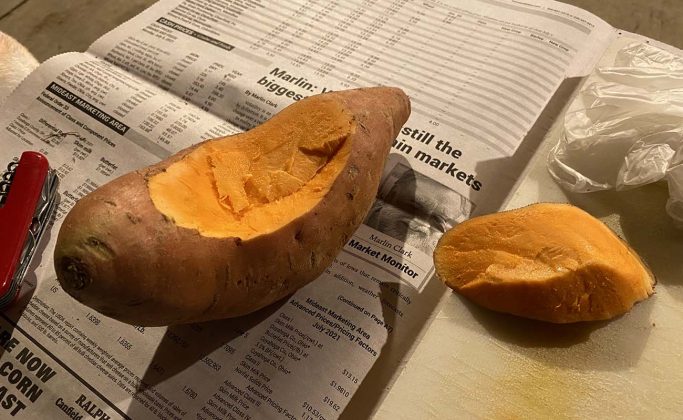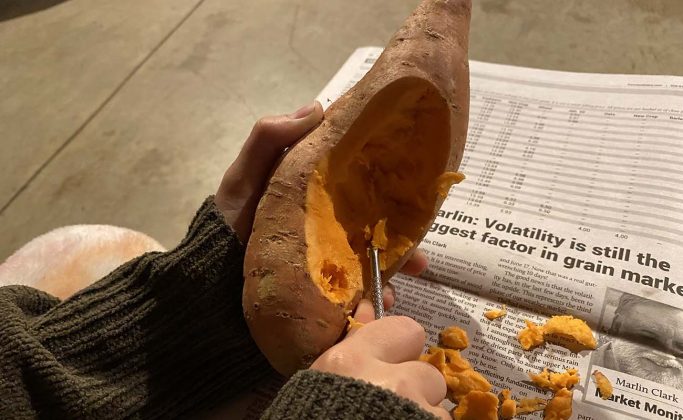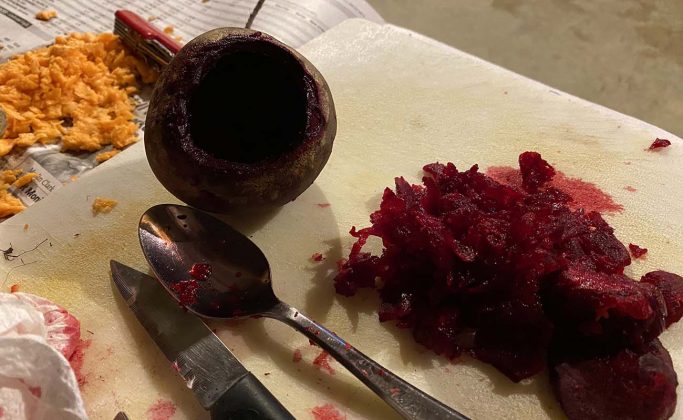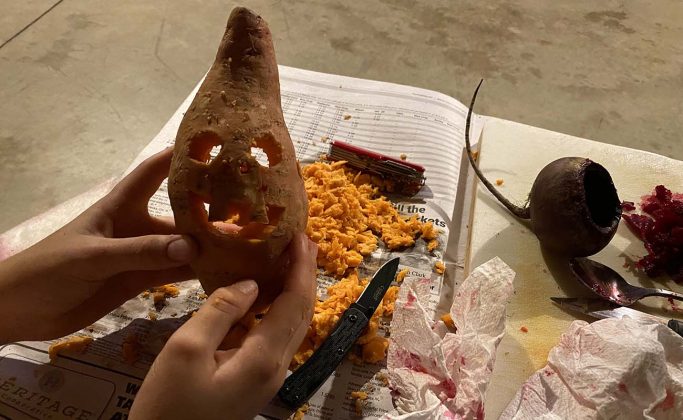
Carving jack-o-lanterns is a popular Halloween tradition. Some like to carve scary faces, others carve silly faces and the more artistic among us carve incredible depictions of movie scenes or characters from popular Halloween and horror movies.
We choose pumpkins of all different shapes, sizes and colors to be our canvases. Oblong pumpkins, round pumpkins and even gourds can be used. Earlier this harvest season, I came across molds that can be used to encase immature pumpkins and produce the face of Frankenstein’s monster and other ghoulish likenesses.
The pumpkin possibilities are endless, as are the concepts for creatively creepy jack-o-lanterns. But did you know the original jack-o-lanterns weren’t even carved out of pumpkins?
That’s right, early jack-o-lanterns were carved from root vegetables.
The origin story of the jack-o-lantern
The custom of carving faces into vegetables dates back thousands of years in some northern European Celtic cultures. Some historians believe it’s rooted in the practice of head veneration or potentially represented war trophies, symbolizing the heads of one’s enemies.
The connection between the tiny produce heads and Halloween actually didn’t take root until they were incorporated into the Celtic festival of Samhain, which inspired many of the traditions of modern-day Halloween.
Samhain was celebrated on Nov. 1 in ancient Britain and Ireland, marking the end of summer and the beginning of the new year. On the eve of the festival, it was believed the spirits of the dead could return home to mingle with the living. So people dressed in costumes and carved sinister faces into root vegetables to ward off restless souls. Typically, beets, turnips and potatoes were used because they were abundant after the harvest.
Many of the traditions of Samhain were carried on when the Roman Catholic Church moved All Saints Day to Nov. 1 and All Hallows’ Eve (or Halloween) fell on Oct. 31 sometime in the 8th century. Observers of the holidays still wore disguises to hide from the wandering souls and carved jack-o-lanterns to deter them.
Stingy Jack
Sometime around the 18th century, Irish folklore about a cunning and unsavory character had worked its way into the fold, as well.
Stingy Jack was often said to be a blacksmith with a taste for mischief and booze. Although there are many versions of his cautionary tale, one recurring storyline is that he managed to trick the devil twice and wound up banned from both heaven and hell. Upon his death, Stingy Jack was forced to wander between both places for eternity with nothing more than an ember of a coal lighting his way in a turnip lantern.
The folktale was reinforced by ignis fatus, a natural phenomenon that occurs in marshlands and bogs that produces flickering lights as gasses created by decomposing organic mature combust. Ignis fatus is described as a floating flame that would move away from travelers. It is more commonly referred to as fool’s fire, fairy lights, will-o’-the-wisp and eventually, Jack of the Lantern or Jack O’ Lantern.
Stingy Jack’s story inspired villagers in Ireland, England and Scotland, who lived near marshlands and observed the eerie lights, to begin making their own versions of his lanterns. They carved frightening faces into turnips and other root vegetables and placed them in windows and doors to keep Stingy Jack and other aimless spirits away from their homes.
This tradition eventually became a hallmark of Halloween and the jack-o-lantern evolved from haunting turnip faces to the expressive pumpkin carvings we recognize today.
When immigrants who observed these traditions came to the United States they swapped the root vegetables for pumpkins, which were both native and plentiful in America. From there, each generation that has followed has put its own spin on the ancient tradition.
Carving an original jack-o-lantern
If our ancestors kicked the root vegetables to the curb, why would we try carving jack-o-lanterns from turnips, beets and potatoes?
They are a little more difficult to carve. They offer a much smaller canvas. And they are not exactly a widely-recognized symbol of Halloween in 2021.
I decided to carve original jack-o-lanterns with my daughter, Vayda, this year for the added challenge, the history and because they are undeniably more creepy than any jack-o-lanterns we have ever carved from pumpkins. It was a bonus that we had already decided to do this project when both of our pumpkins rotted nearly two weeks before Halloween.

Overall, the project was fun, informative and, to us, novel. It’s great to have traditions, but there’s something special about trying something new and reincarnating old ones.
Supplies
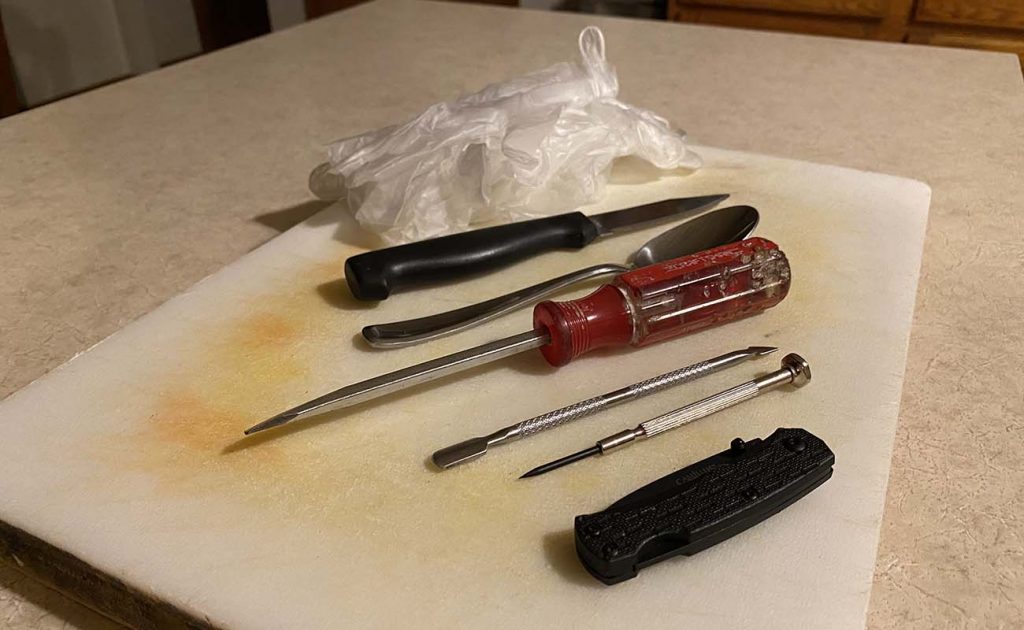
- Large turnip, beet or potato (maybe all three if you’re particularly accident-prone or just extra motivated)
- Small pearing or pocket knife
- Small corkscrew
- Small metal pick or flat-blade screwdriver
- A spoon
- Plastic gloves (for the beets)
- Newspaper
- Small candle to place inside
Steps
- Prepare your work area and lay out your tools. Make sure you are equipped with the right size tools for the job. Turnips, beets and potatoes have a lot less surface area than pumpkins to work with — try to remember that when you plan your design.
- Remove the top or back of your root vegetable. The same as you would do with a pumpkin, you have to cut off the top to begin hallowing the inside. With pumpkins, I typically cut a square hole around the stem. But because root vegetables are not hollow, it’s easier to cut straight across. You may also consider doing the same on the bottom or back of your root vegetable so it sits upright when you’re finished and offers easier access.
- Clean out the inside of your root vegetable. Because the flesh of these types of vegetables is much denser than a pumpkin or gourd, hollowing it out can be more difficult. I recommend whittling away the center in small sections to avoid cutting yourself or cutting through one of the sides. Start in the center and work your way out to the edges until you’ve reached your desired thickness. Try using different tools throughout this process. And make sure to leave enough flesh so that your jack-o-lantern has a sturdy surface to cut its face into.
- Design your face. Traditionally, jack-o-lanterns made from root vegetables have simple faces that are frightening in their ambiguity, with empty oval or round voids for eyes and small slit-like mouths containing tiny teeth. The openings are so small that only a flicker of light escapes, true to the original legend of Stingy Jack. Regardless of what you choose to attempt, try to keep in mind the scale of the space you have available.
- Carve your face. Using the assortment of small tools you’ve assembled to carve your jack-o-lantern’s face, carefully cut its features into the outer surface of its skin. You may choose to use a small corkscrew or pick instead of a knife to make rounded holes for the eyes or corners of the mouth. If you slip or make an opening too wide, you can stick toothpicks through the flesh of your jack-o-lantern to reinforce its features.
- Stand it up. Depending on how you cut the opening to hollow out your jack-o-lantern, you may have to create a makeshift kickstand, remove the bottom or both to get it to stand up straight.
- Light it up. Make sure your candles fit and place your jack-o-lanterns in your doorway, window or on your porch to keep wandering spirits away on Halloween.
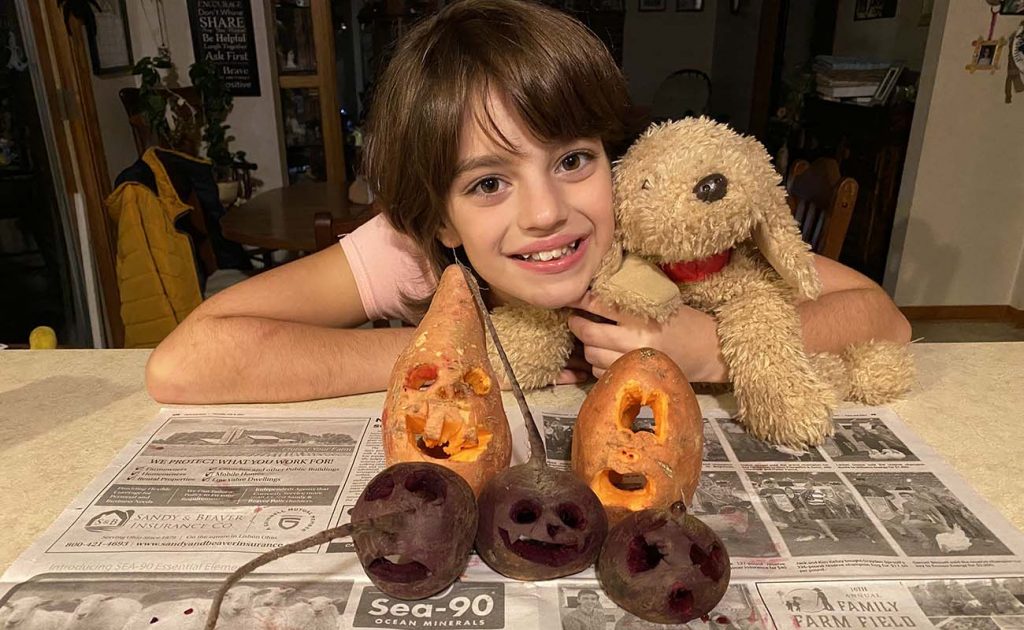
Related content
- How to pick the perfect pumpkin, gourd or squash
- How to grow pumpkins: 7 tips
- How to make my Jack O’ Lantern last longer
- Here’s the scoop on cooking and baking with pumpkin
- Pumpkin season: Picking, cooking and preserving fall’s favorite fruit
- Prolong the life of decorative pumpkins, gourds and squash in five simple steps
- Pumpkin decorating ideas for Halloween






